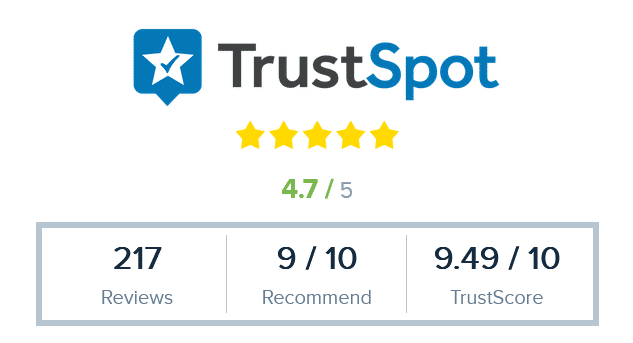Types of Solar Eclipses
Grade 7 Science Worksheets
A solar eclipse occurs when the Moon passes between the Sun and the Earth, blocking the Sun’s light and casting a shadow on the Earth.
Table of Contents:
- Types of Solar Eclipses
- Interesting Facts about the Solar Eclipse
- FAQs
Solar Eclipses - Grade 7 Science Worksheet PDF
This is a free printable / downloadable PDF worksheet with practice problems and answers. You can also work on it online.
|
|
Untimed |
|
Sign up with your email ID to access this free worksheet.
"We really love eTutorWorld!"
"We really love etutorworld!. Anand S and Pooja are excellent math teachers and are quick to respond with requests to tutor on any math topic!" - Kieran Y (via TrustSpot.io)
"My daughter gets distracted easily"
"My daughter gets distracted very easily and Ms. Medini and other teachers were patient with her and redirected her back to the courses.
With the help of Etutorworld, my daughter has been now selected in the Gifted and Talented Program for the school district"
- Nivea Sharma (via TrustSpot.io)
Solar Eclipses
Celestial bodies like the sun, moon, and planets are involved in a variety of phenomena that are occurring throughout the universe. While some phenomena are invisible to the human eye, others are. These extraordinary occurrences in the galaxy include supernovas, solar and lunar eclipses, asteroids, comets, asteroids, meteors, and meteoroids. Let’s first examine what an eclipse is and why it happens.
When a moon or a planet blocks the sun’s light, an eclipse occurs. An eclipse occurs when a planet or the moon blocks the path of the sun.
Two different types of eclipses are possible, namely:
- Solar eclipse
- Lunar eclipse
When the moon casts its shadow on the earth as a result of moving in front of the sun. In this eclipse, the sun’s light is partially or completely blocked by the moon’s shadow. The moon casts two different shadows toward the earth during a solar eclipse because the sun, moon, and earth are all in alignment.
The umbra and penumbra are the names for these shadows. As it approaches the earth, the umbra gets shorter. The moon’s shadow’s dark center, or umbra, is visible. As it approaches the earth’s surface, the penumbra grows larger.
4 Types of Solar Eclipses
1. Total eclipse: A total eclipse occurs when the sun’s light is completely blocked. Here, the sun’s intensely bright light is completely hidden by the dark silhouette of the moon.
2. Partial eclipse: It is referred to as a partial eclipse when the moon partially blocks the sun’s rays. The sun and moon are not parallel to the Earth in this location.
3. Annular eclipse: The sun and moon are perfectly aligned with the earth during an annular eclipse. However, the moon’s size seems to be smaller than the sun’s. The moon’s dark disc is encircled by the sun, which appears as a bright ring.
4. Hybrid eclipse: A hybrid eclipse is a unique occurrence in which parts of the earth’s surface appear to be under a total eclipse while other parts appear to be under an annular eclipse.
Steps to Look at a Solar Eclipse Safely
Watching the clear sky is always exciting, but seeing a celestial event is even more so. Some cosmological phenomena are not recommended for observation with the naked eye. One such phenomenon that harms the retina when seen up close is the solar eclipse.
1. To view this magnificent process, use specially designed solar filters, such as handheld solar viewers or eclipse glasses.
2. Check the filters for damage or scratches before using them.
3. Never use a telescope or a pair of binoculars to view.
4. Avoid capturing the solar eclipse with a camera or any other optical device.
5. Home filters, solar viewing glasses, and sunglasses are a big NO.
6. Last but not least, avoid removing the filter while gazing at the sun. Remove the filter and turn away from the sun.
It is important to emphasize that regular sunglasses are not suitable for viewing a solar eclipse. They do not provide sufficient protection for your eyes. Only specially designed solar filters, such as handheld solar viewers or eclipse glasses, should be used.
It is worth mentioning that during a total solar eclipse, it is safe to view the eclipse with the naked eye only during the brief period of totality when the Sun is completely covered by the Moon. However, as soon as the Sun starts to reappear, proper eye protection must be used again.
“There have been times when we booked them last minute, but the teachers have been extremely well-prepared and the help desk at etutorworld is very prompt.
Our kid is doing much better with a higher score.”
7th Grade Tutoring
eTutorWorld offers Personalized Online Tutoring for Math, Science, English, and Standardised Tests.
Our Tutoring Packs start at just under $21 per hour, and come with a moneyback guarantee.
Schedule a FREE Trial Session, and experience quality tutoring for yourself. (No credit card required.)
Facts about the Solar Eclipse
Solar eclipses occur on average about every 18 months, but they are only visible from specific parts of the Earth.
The longest solar eclipse of the 21st century occurred on July 22, 2009, and lasted a total of 6 minutes and 39 seconds.
The corona, or outer layer of the Sun’s atmosphere, is visible during a total solar eclipse and is hotter than the Sun’s surface.
During a total solar eclipse, the temperature drops and the sky darkens, which can cause animals to behave unusually.
Solar eclipses have been documented by humans for thousands of years, and they have been the subject of many cultural and mythological beliefs. Solar eclipses have been observed and documented by humans for thousands of years. They have been depicted in ancient cave paintings and mentioned in historical texts, and they continue to be a source of fascination and scientific study.
Another interesting fact is that a solar eclipse can have effects on the natural environment. For example, the sudden decrease in sunlight during a total solar eclipse can cause a drop in temperature, affect wind patterns, and even influence animal behavior. Some animals may become confused or behave as if it were nighttime.
Lastly, it would be helpful to clarify that a hybrid eclipse is a rare type of eclipse that appears as an annular eclipse in some regions and as a total eclipse in others along its path of totality. This occurs due to the curvature of the Earth and the varying distances between the observer and the Moon’s shadow.
Do You Stack Up Against the Best?
If you have 30 minutes, try our free diagnostics test and assess your skills.
FAQS
What is a solar eclipse?
A solar eclipse occurs when the Moon passes between the Sun and the Earth, blocking the Sun’s light and casting a shadow on the Earth.
How often do solar eclipses occur?
Solar eclipses occur on average about every 18 months, but they are only visible from specific parts of the Earth.
What is a total solar eclipse?
A total solar eclipse occurs when the Moon completely blocks the Sun, and the Sun’s corona, or outer layer, is visible as a glowing ring around the Moon.
Is it safe to look at a solar eclipse?
No, it is not safe to look directly at a solar eclipse without proper eye protection. The Sun’s UV radiation can cause permanent eye damage or blindness.
What is the best way to view a solar eclipse?
The safest way to view a solar eclipse is to use special eclipse glasses or a solar filter on a camera or telescope. It is also possible to indirectly view the eclipse by projecting the Sun’s image onto a surface using a pinhole camera or binoculars.

Kathleen Currence is one of the founders of eTutorWorld. Previously a middle school principal in Kansas City School District, she has an MA in Education from the University of Dayton, Ohio. She is a prolific writer, and likes to explain Science topics in student-friendly language. LinkedIn Profile
Affordable Tutoring Now Starts at Just $22.49
eTutorWorld offers affordable one-on-one live tutoring over the web for Grades K-12. We are also a leading provider of Test Prep help for Standardized Tests (SCAT, CogAT, MAP, SSAT, SAT, ACT, ISEE, and AP).
What makes eTutorWorld stand apart are: flexibility in lesson scheduling, quality of hand-picked tutors, assignment of tutors based on academic counseling and diagnostic tests of each student, and our 100% money-back guarantee.
Whether you have never tried personalized online tutoring before or are looking for better tutors and flexibility at an affordable price point, schedule a FREE TRIAL Session with us today.
*There is no purchase obligation or credit card requirement
Grade 7 Science Worksheets
- Elements and Compounds
- Solar Energy
- Photosynthesis
- Electricity and Magnetism
- Law of conservation of energy
- Periodic table
- Properties of Matter
- Waves
- Energy Resources
- Weather and Climate
- Immune, Circulatory and Digestive Systems
- Organs in Multi-cellular Organism
- Sedimentary, Igneous, and Metamorphic Rocks
- Structure of the Earth
- Law of Conservation of Mass
- Physical and Chemical Changes
- Scientific Method
- Human Digestive System
- Environmental Science
- Renewable and Non-renewable energy Resources
- Characteristics of Living Organisms
- Life Science
- Earth and Space Science
- Solar Eclipse
- Heat Technology
- Newton’s Laws of Motions
- Physical Science
- Tools, Measurement and SI Units
- Earth Atmosphere
- Interactions of Living things
- The Earth Ecosystem
- Organelles in Plant and Animal cells
- Layers of the Earth
- Cycles in Nature
Grade 7 Math Worksheets
- Fractions
- Linear equations word problems
- Statistics
- Properties of Parallel Line
- Finding slope from an equation
- Identifying Quadrilaterals
- Percent Change
- Properties of addition and multiplication
- Pythagorean Theorem
- Solving two step inequalities
- Symmetry
- Fractions to Decimals (New)
- Whole Number Exponents with Integer Bases (New)
- Adding and Subtracting Fractions (New)
- Integer Addition and Subtraction (New)
- Dividing Mixed Numbers (New)
- Basics of Coordinate Geometry (New)
IN THE NEWS

Our mission is to provide high quality online tutoring services, using state of the art Internet technology, to school students worldwide.
Online test prep and practice
SCAT
SSAT
ISEE
PSAT
SAT
ACT
AP Exam
Science Tutoring
Physics Tutoring
Chemistry Tutoring
Biology Tutoring
Math Tutoring
Pre-Algebra Tutoring
Algebra Tutoring
Pre Calculus Tutoring
Calculus Tutoring
Geometry Tutoring
Trigonometry Tutoring
Statistics Tutoring
Quick links
Free Worksheets
Fact sheet
Sales Partner Opportunities
Parents
Passive Fundraising
Virtual Fundraising
Our Expert Tutors
Safe and Secure Tutoring
Interactive Online Tutoring
After School Tutoring
Elementary School Tutoring
Middle School Tutoring
High School Tutoring
Home Work Help
Math Tutors New York City
Press
©2022 eTutorWorld Terms of use Privacy Policy Site by Little Red Bird
©2022 eTutorWorld
Terms of use
Privacy Policy
Site by Little Red Bird











